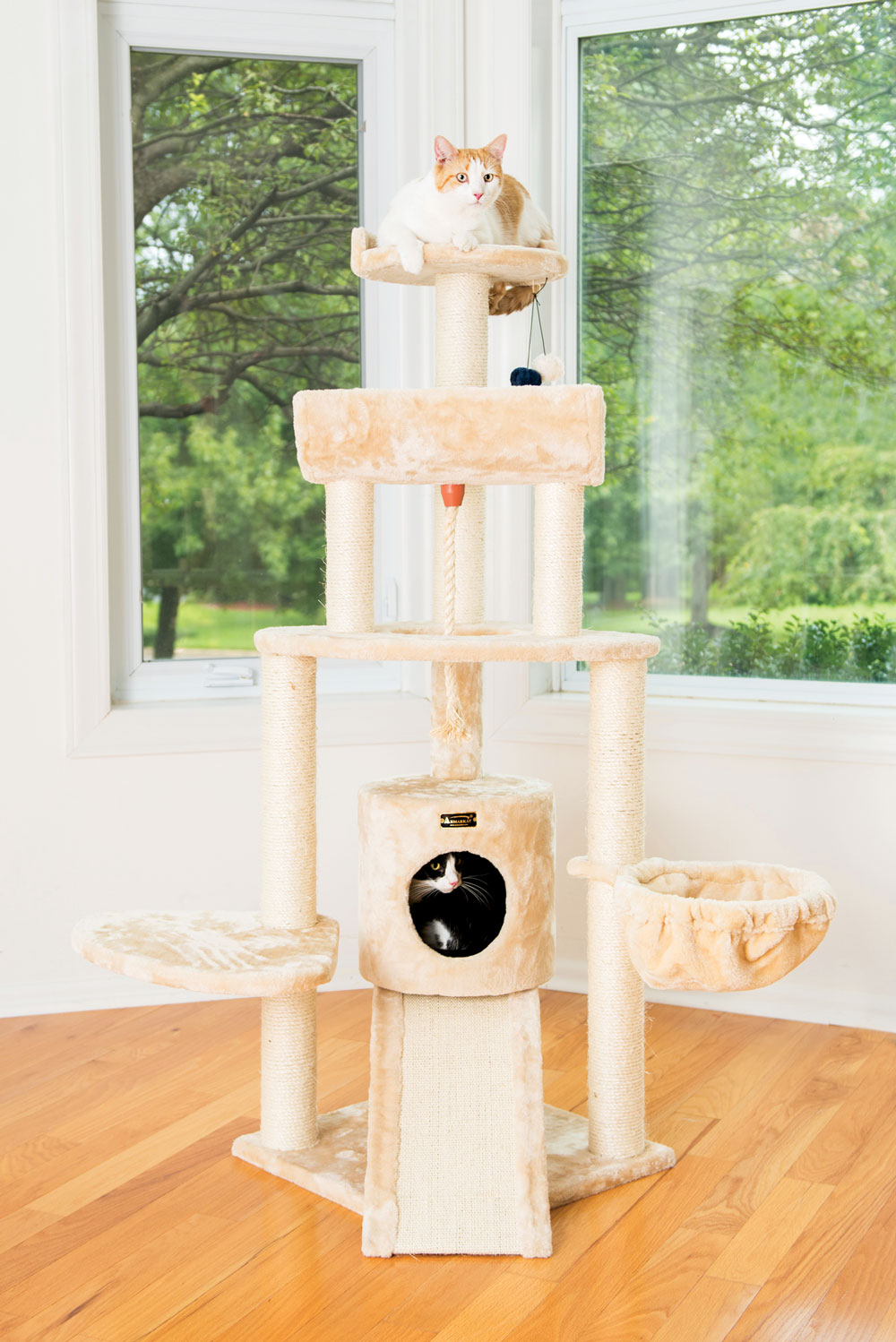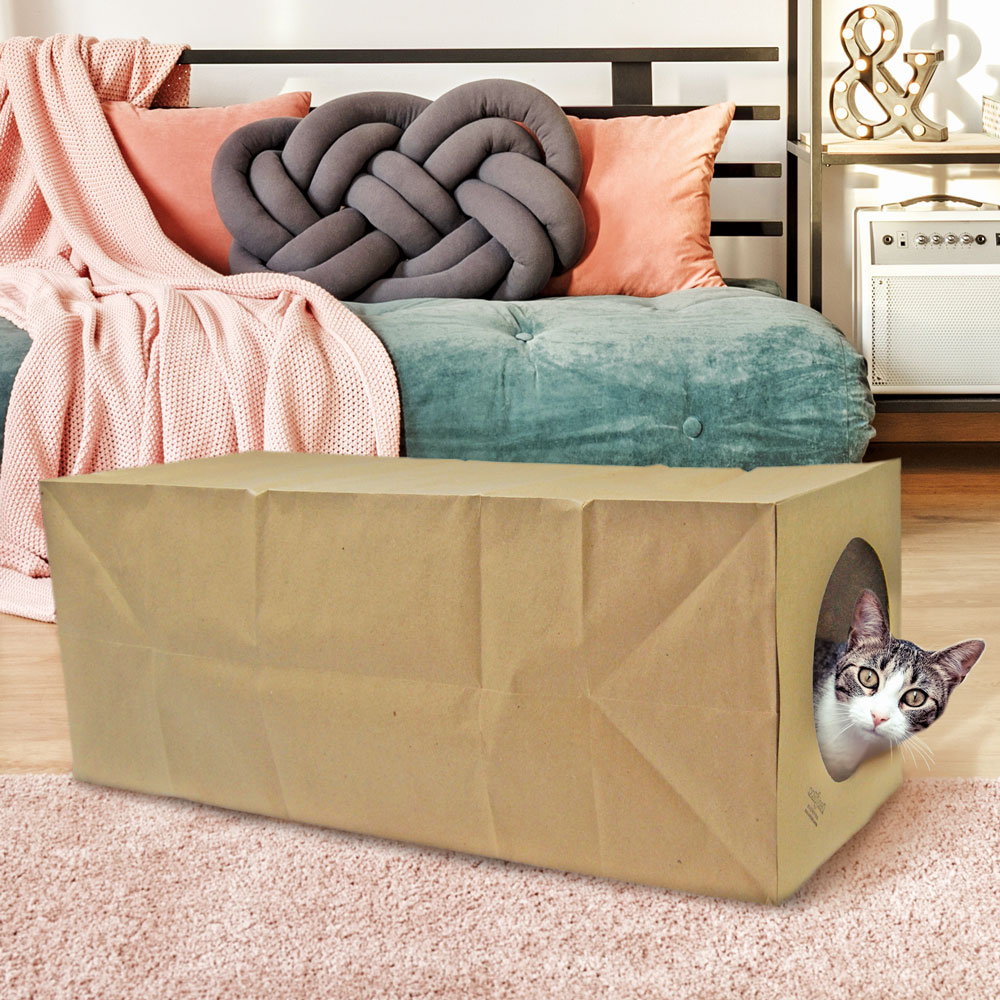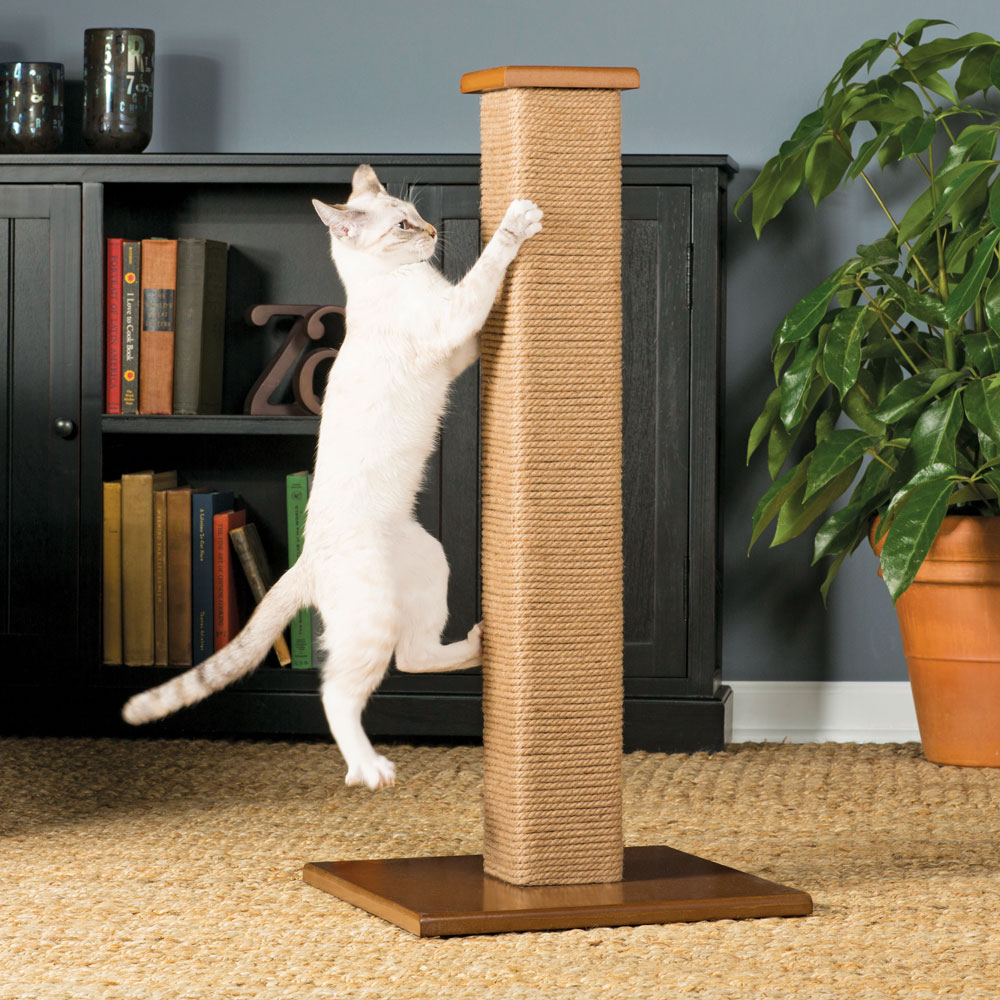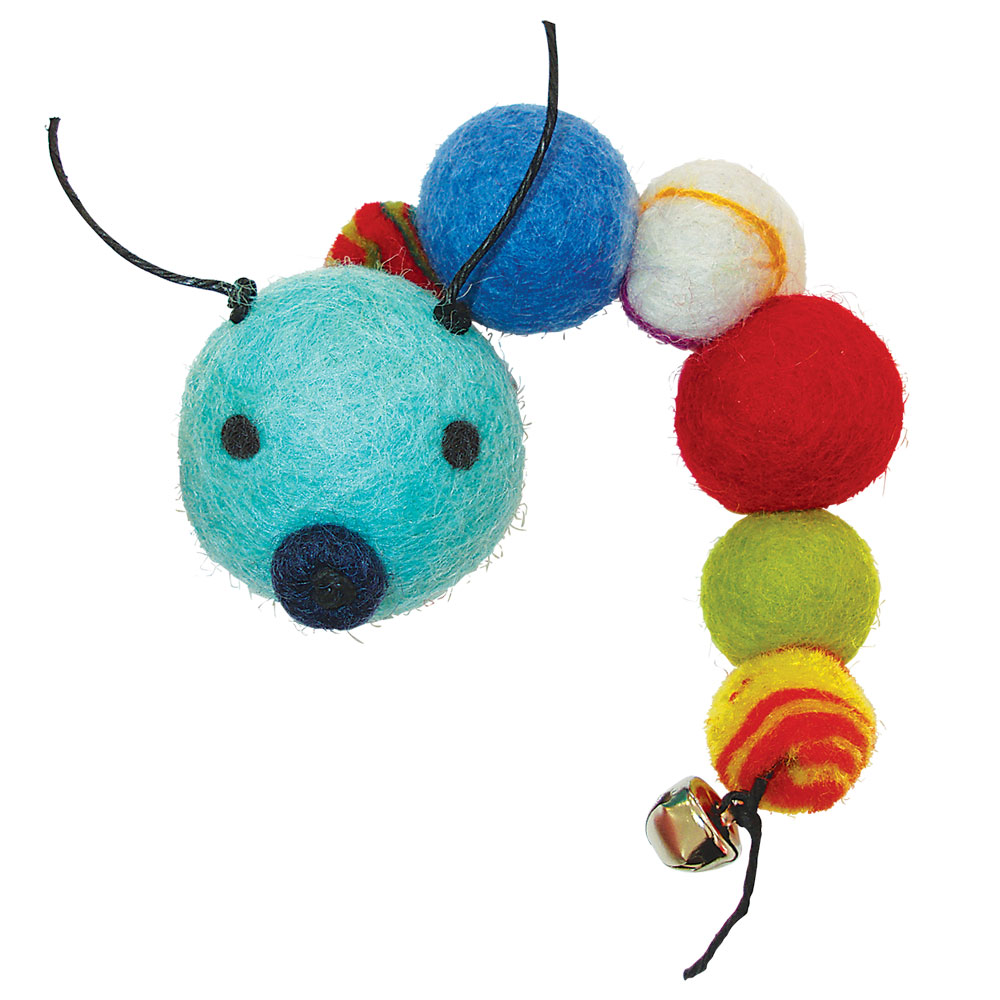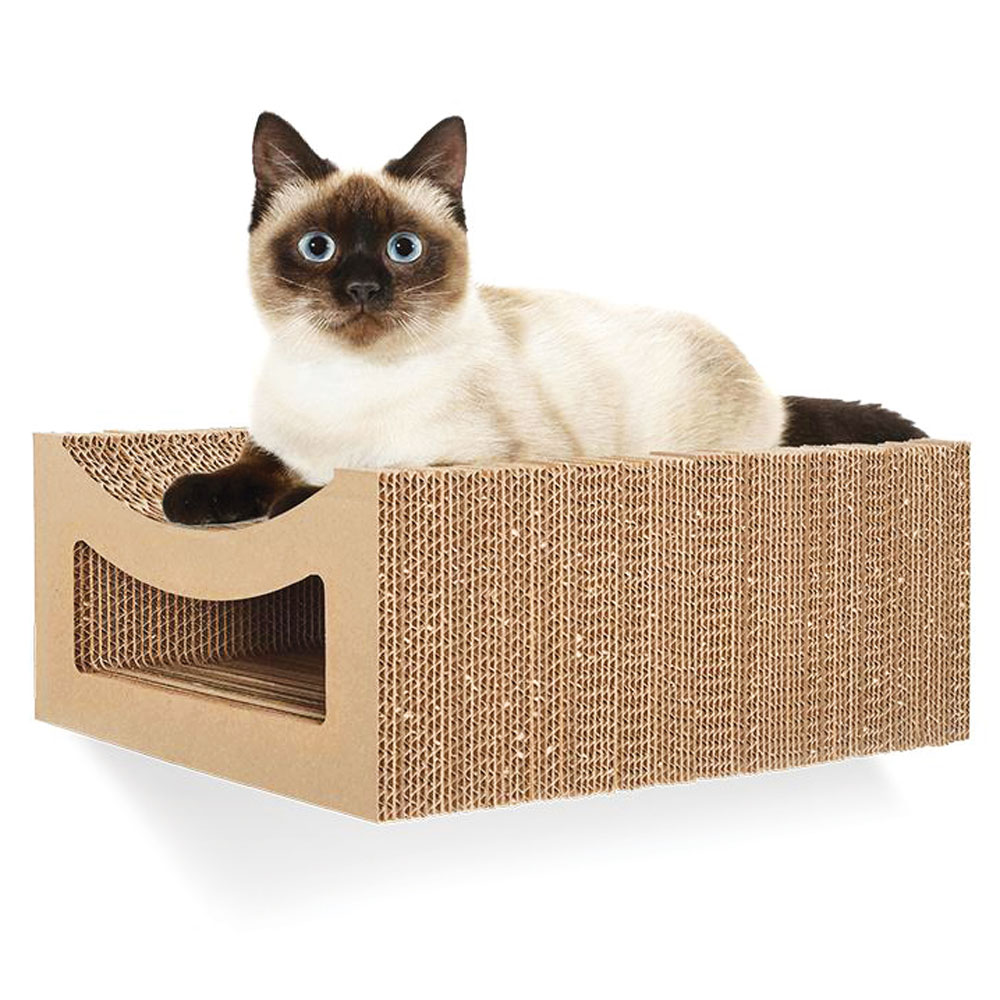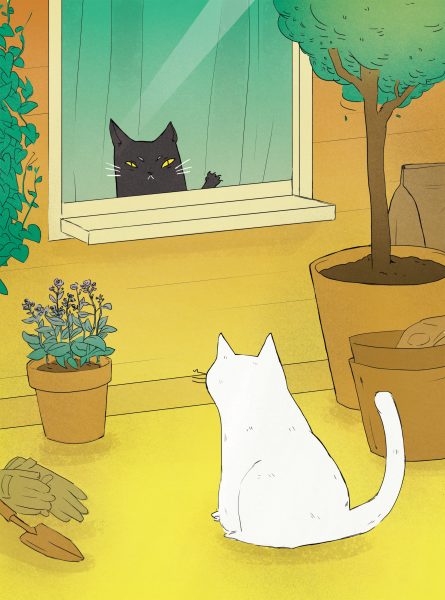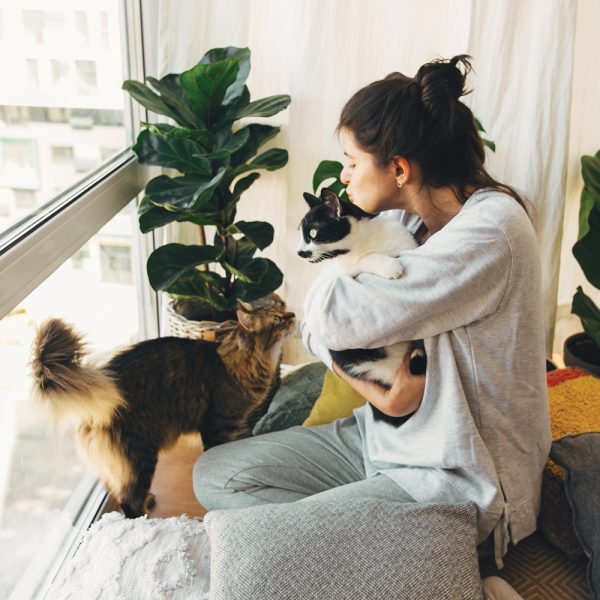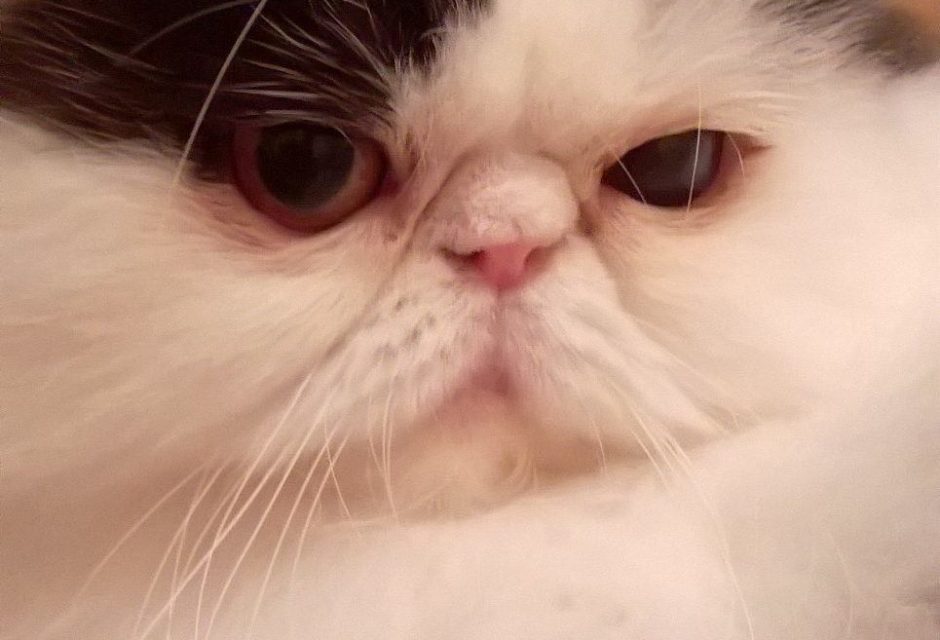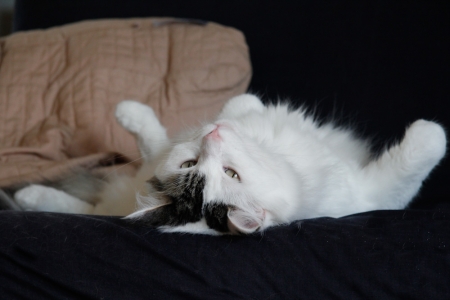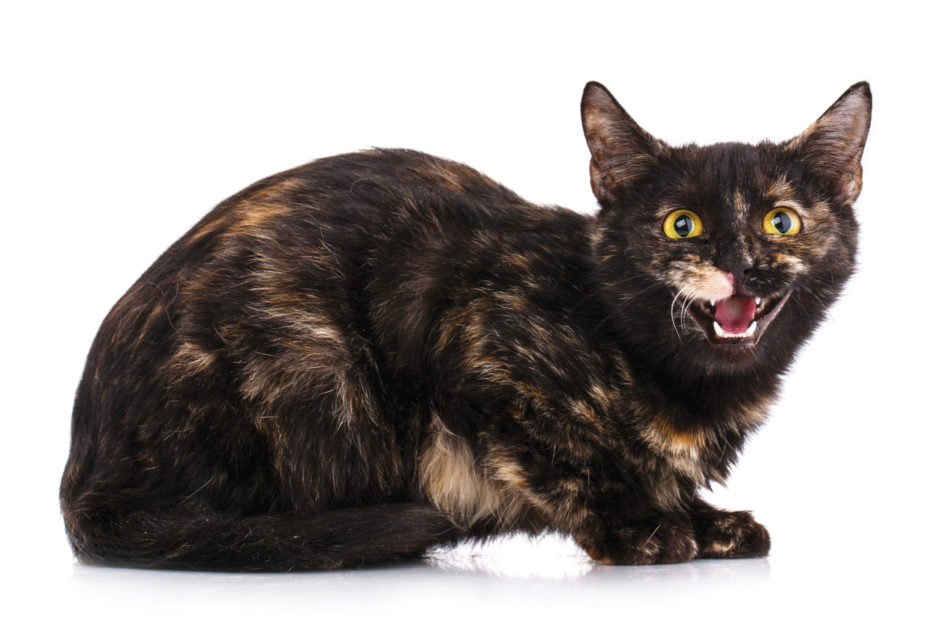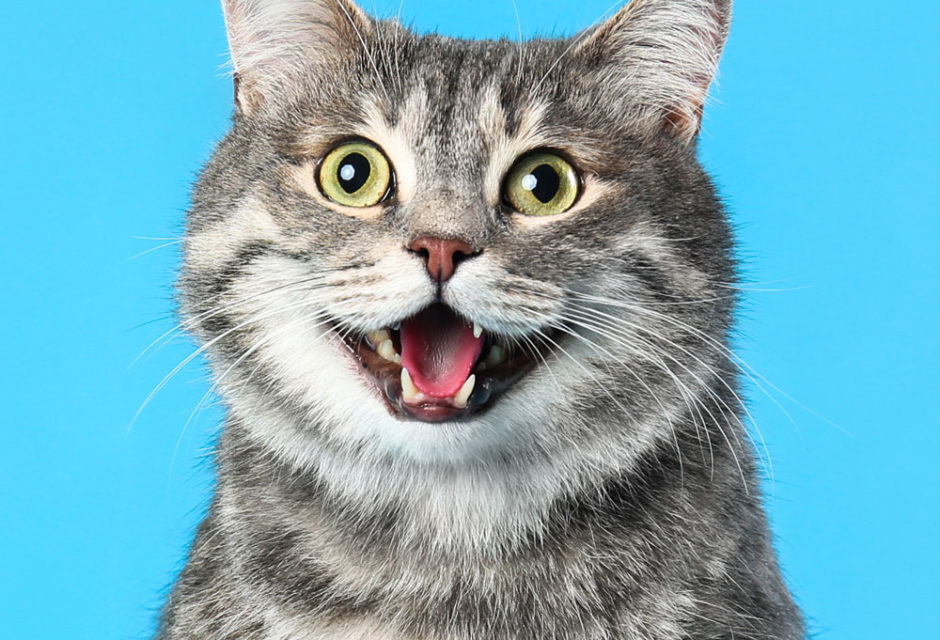
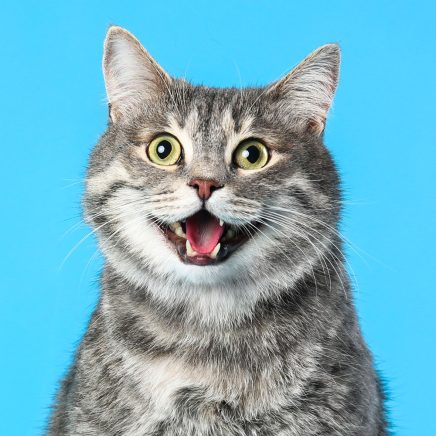
A Recipe for Feline Fun
How to create an environment that lets your agile, athletic, sensitive cat explore, play, relax
1. Cats Up High: Vertical Space and Your Cat
Cats need vertical space; their need to perch dates back to their wildcat ancestry. And make no mistake, your domestic house cat still has a lot of the wild in him. Scientists say there is little genetic difference between say, a Tabby, and a wild cat. In fact, there’s some debate over whether cats fit the definition of domesticated as it is commonly used, says Wes Warren, PhD, associate professor of genetics at The Genome Institute at Washington University in St. Louis.
“We don’t think they are truly domesticated,” Warren tells Smithsonian. He instead refers to cats as “semi-domesticated.”
For the multi-cat home, providing vertical space becomes even more essential. Creating vertical space allows your cats to more easily share territory without conflict and can go a long way toward creating harmony in homes with more than one cat.
Give your house panthers the vantage-point they’re looking for with cat trees and cat walks. Armarkat’s beautiful Classic cat trees feature perches, baskets, ramps, and hanging sisal ropes, offering lookouts and hideaway spots to delight your cat and provide needed vertical space. (From $75, armarkat.com)
2. If I Fits, I Sits: Cats and Boxes
Your cat derives security and comfort from enclosed spaces. The standard cat reaction to a stressful situation is to run and hide. Boxes provide a perfect safety zone to retreat to where cats can observe unseen. Of course, this also has an advantage from a predation perspective—cats are ambush predators and a box provides an ideal hiding spot from which to stalk prey (or your ankles).
Ethologist Claudia Vinke of Utrecht University in the Netherlands studied stress levels in shelter cats. Working with a Dutch animal shelter, she provided hiding boxes for a group of newly arrived domestic cats while another group received none. The study found a significant difference in stress levels between the cats with boxes and those without. The cats with boxes adapted to their environment faster and experienced less stress. They were also more interested in interacting with their caretakers.
“Hiding is a behavioural strategy of the species to cope with environmental changes and stressors,” the researcher told Wired.
But wait, you may be thinking, my cat doesn’t seem stressed; he just really digs carboard boxes. It could also be a temperature thing. For cats, our normal house temperature is darn cold!
A study by the National Research Council found that the thermoneutral range for a domestic cat is 86 to 97 degrees Fahrenheit. That’s the temperature zone in which cats are “comfortable,” i.e. they don’t need to generate heat to keep warm or expend energy cooling themselves. That range is also 20 degrees higher than ours, which goes a long way towards explaining why cats love to bake in the sun, even on very hot days. It could also explain, in part, why they love curling into too-small boxes. Cardboard is insulating, so that awkward-looking squeeze into a tiny box could actually be keeping them nice and warm, in addition to busting stress and providing a hideout from which to plot a stealth attack.
Try any box, Dezi & Roo’s Hide and Sneak tunnel combining the thrill of crinkling paper bags with the fun of a cardboard box and a unique tunnel ($11, deziroo.com), or Dharma Dog Karma Cat’s gorgeous, handcrafted felted Himalayan wool cat caves ($70, dharmadogkarmacat.com).
3. Cat Scratch Fever: Why Your Cat Needs to Scratch
Scratching is necessary for your cat’s health; it’s how they remove the outer sheath from their claws, mark their territory both visually and with scent (cats have scent glands on their paws), and stretch their bodies and flex their feet and claws, says the Humane Society of the United States.
Make sure your cat’s need to scratch doesn’t run up against your desire to have un-ruined furniture by providing ample and adequate areas for your cat to get her scratch on. And this is key: though the temptation may be to hide the scratching post away in the spare room, this definitely won’t work for your cat. If you want your cats to actually use their scratchers, they need to be placed in socially significant areas, like the living room. Making sure that both you and your cat can be happy with this set up is Prevue Pet Products, creators of scratching posts that will delight your cat and look good next to your sofa ($90, prevuepet.com). Also try Sofa Scratchers ($50, sofascratcher.com), an ingenious, contoured sisal scratching post meets couch corner protector. Just slide it under the leg of your sofa to anchor it in place!
The more approved, well positioned scratching areas you provide, the less likely your furniture is to be targeted.
4. It’s Playtime! Why Your Cat Needs to Play
Cats still retain their hunting skills. Despite having ample food supplied by their servants—I mean humans—they’ll still go out and kill mice, insects, birds, and whatever else tickles their fancy if given the opportunity. By keeping your cats indoors, you ensure they don’t fall victim to predators or speeding cars, but it then falls to you to engage your cat in play that lets them stalk, play with, and ultimately go in for “the kill.” Using a wand toy, you can engage your cat in this sort of mentally and physically satisfying play—just be sure to let your cat eventually catch and “kill” his “prey” or the play session will leave your cat unsatisfied.
Try the awesome Eco Catty Pillar from Honest Pet Products, a totally sustainable and natural toy made from organic felted wool and hemp twine. Cats dig the natural lanolin aroma and love to bat and chase it as it rolls! Plus, it’s handcrafted by rural Nepalese women, supporting impoverished families. $1.50 for every purchase goes to helping Nepalese families in need! ($16, honestpetproducts.com).
5. Jump Around: Cats Need Exercise
Cats are natural athletes and have an innate need to jump, a behaviour that is often discouraged. Give your cat somewhere to jump to without knocking things over by installing cat shelves. Cat shelves also give your indoor cat an opportunity to exercise, something that most indoor cats are sorely lacking, notes expert feline behaviourist Mieshelle Nagelschneider.
Try Hangman Products’ gorgeously minimal wall-mounted cat shelves, designed to help your cat reach new heights and promote positive scratching behaviour. Holds up to 30 pounds. (From $65, hangmanproducts.com)
For more great Feline Finds, check out Modern Cat selected products in our e-store!
Join the newsletter and never miss out on cat content again!
"*" indicates required fields
By clicking the arrow, you agree to our web Terms of Use and Privacy & Cookie Policy. Easy unsubscribe links are provided in every email.





